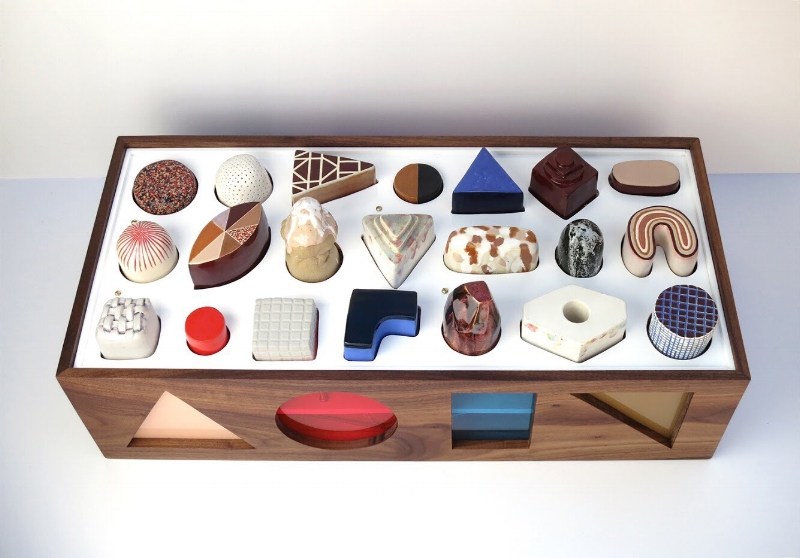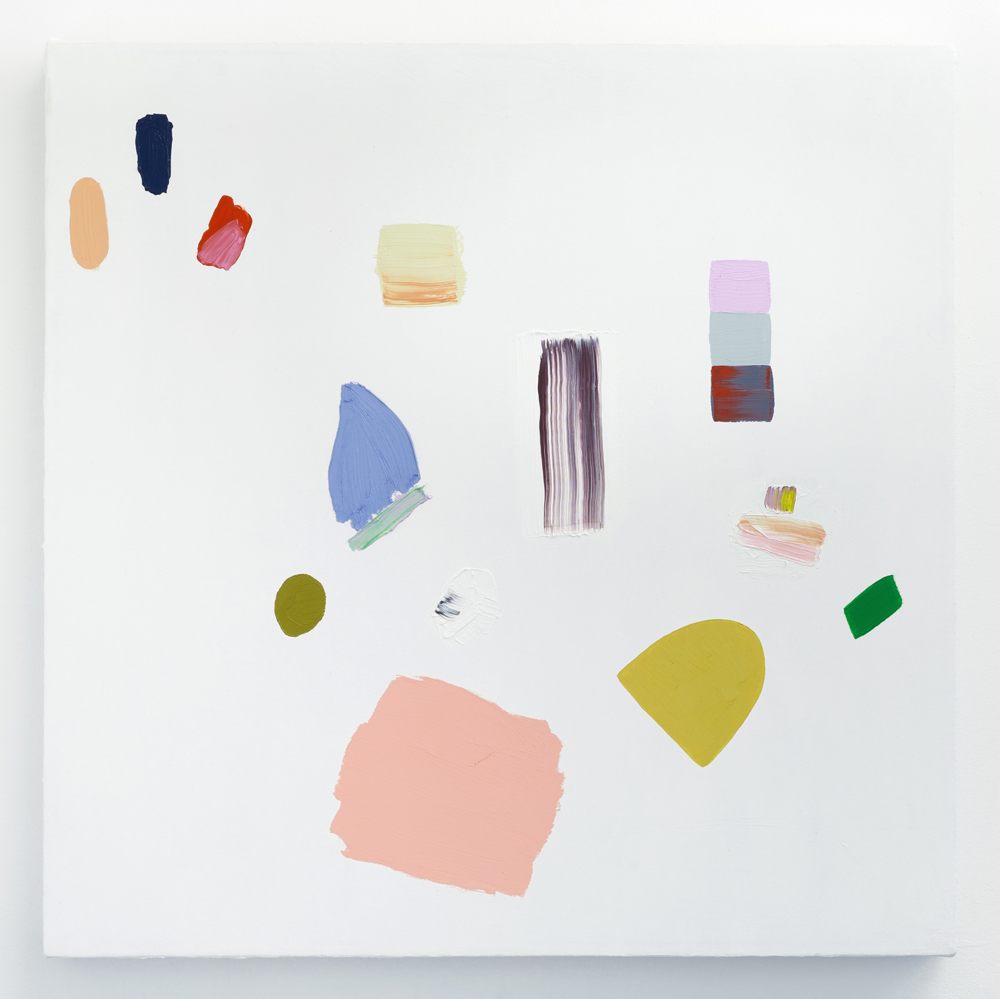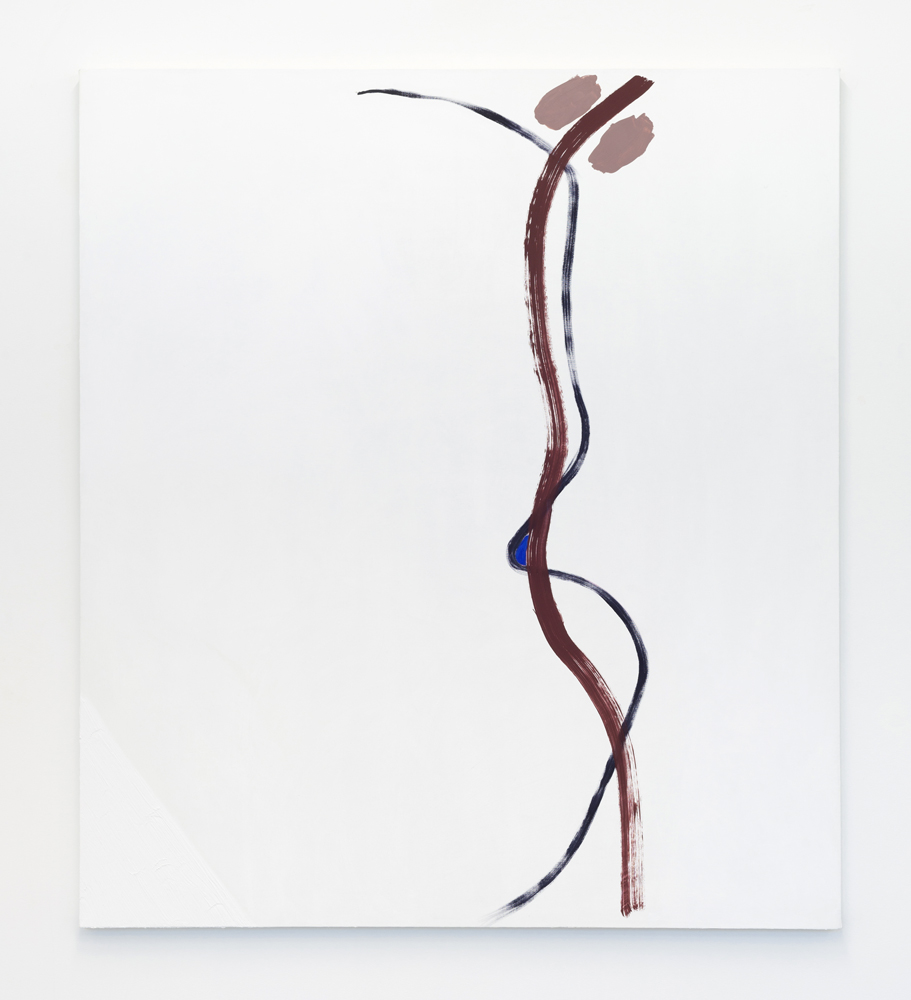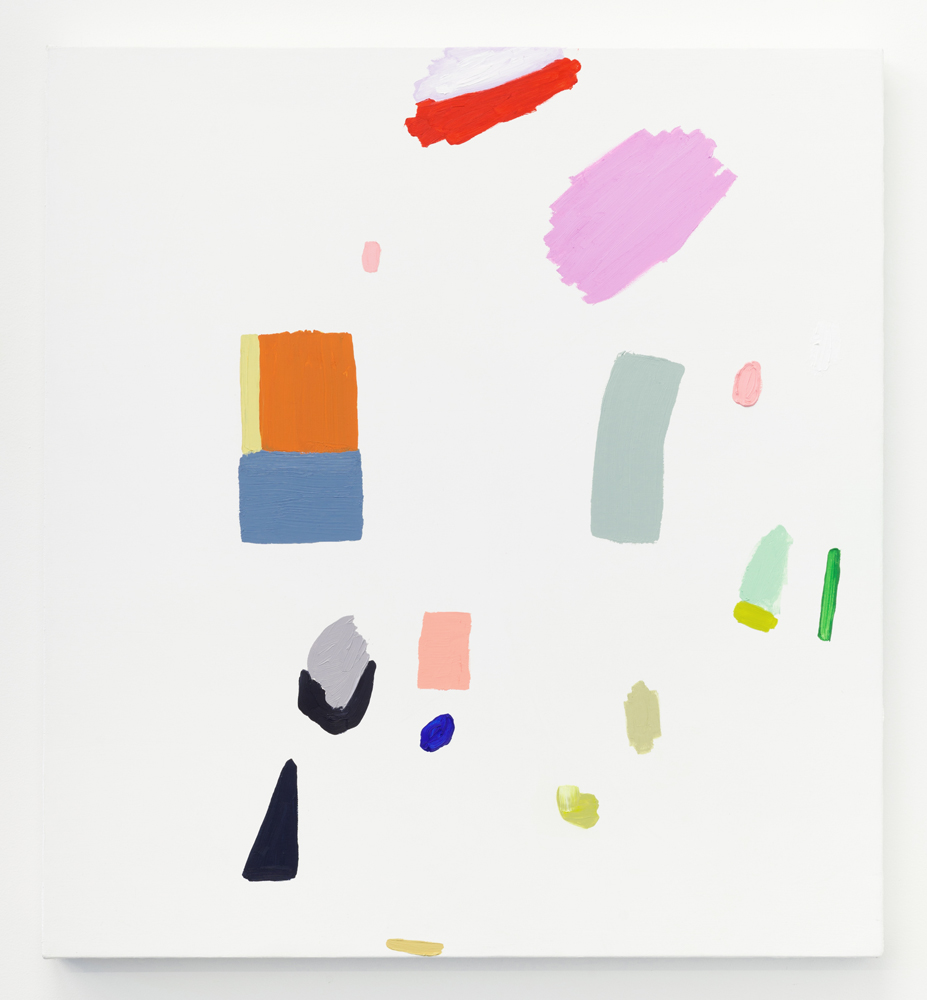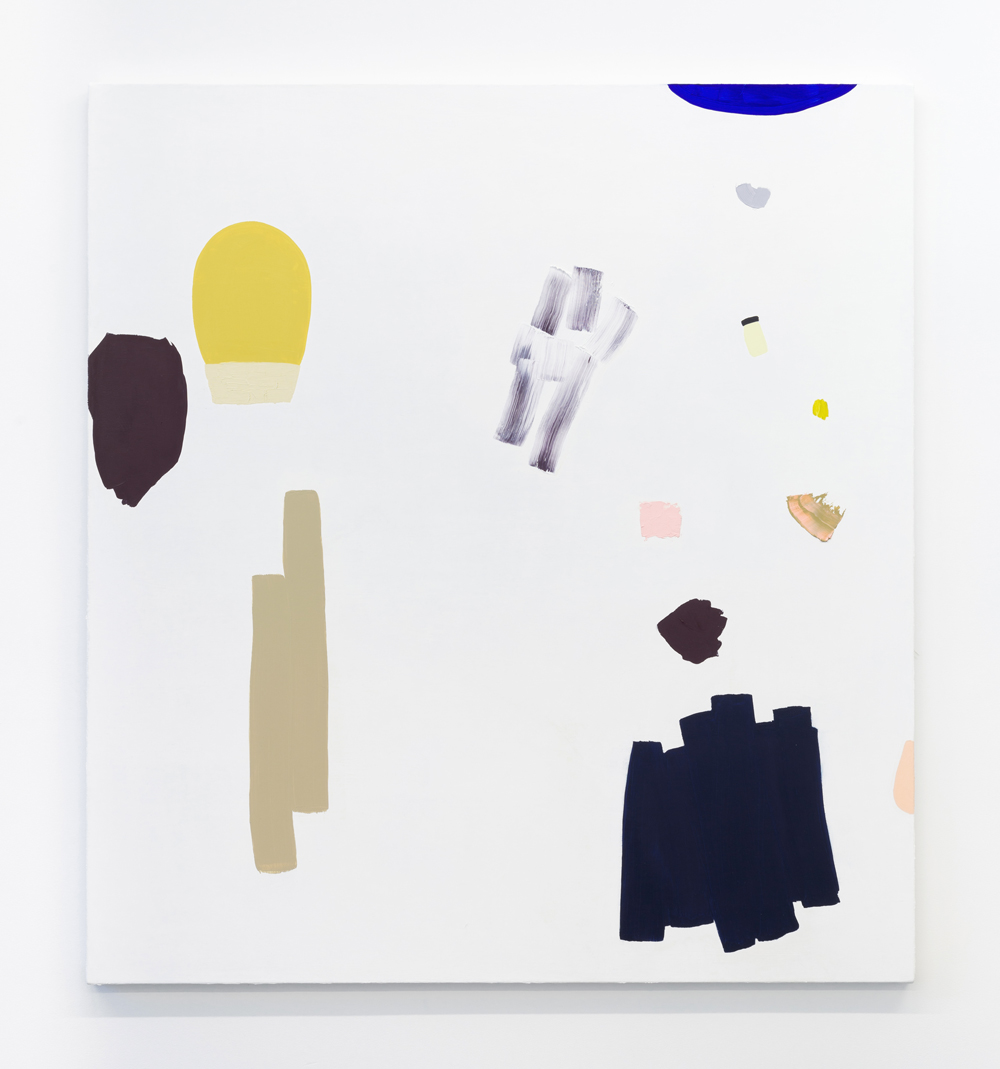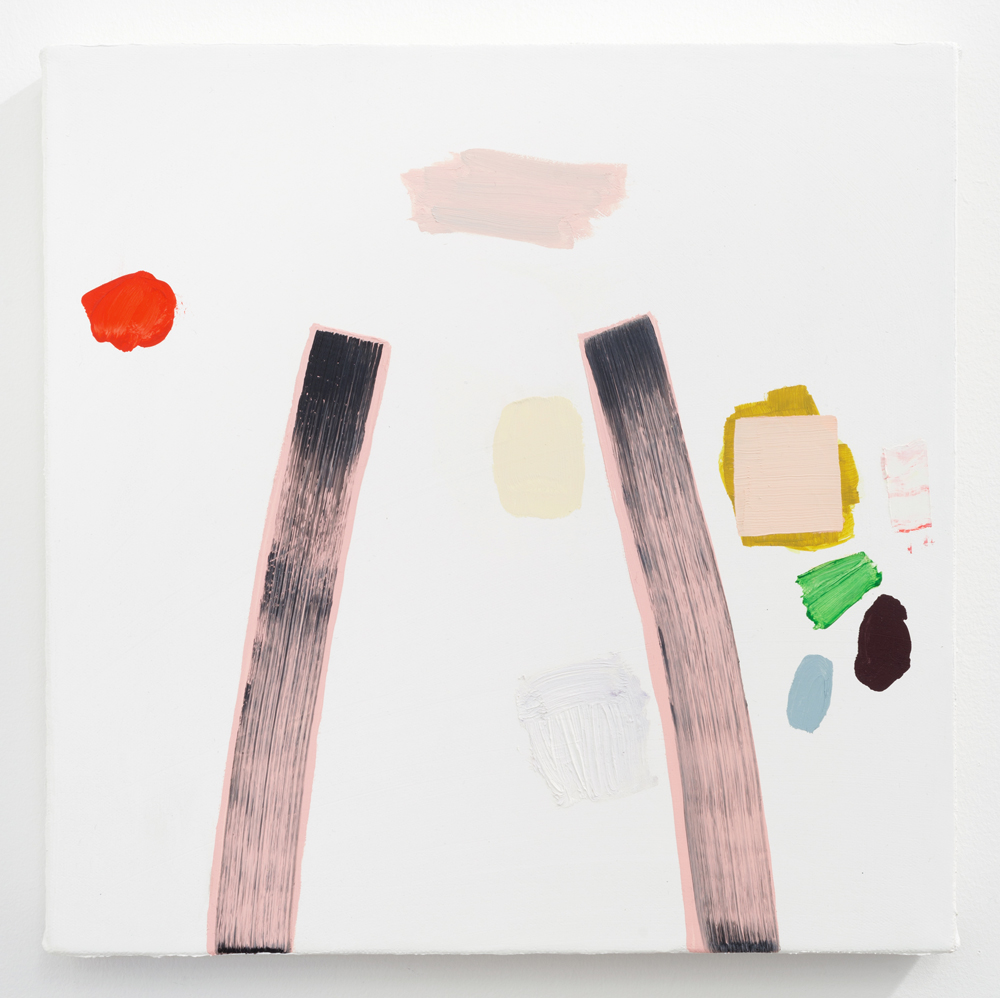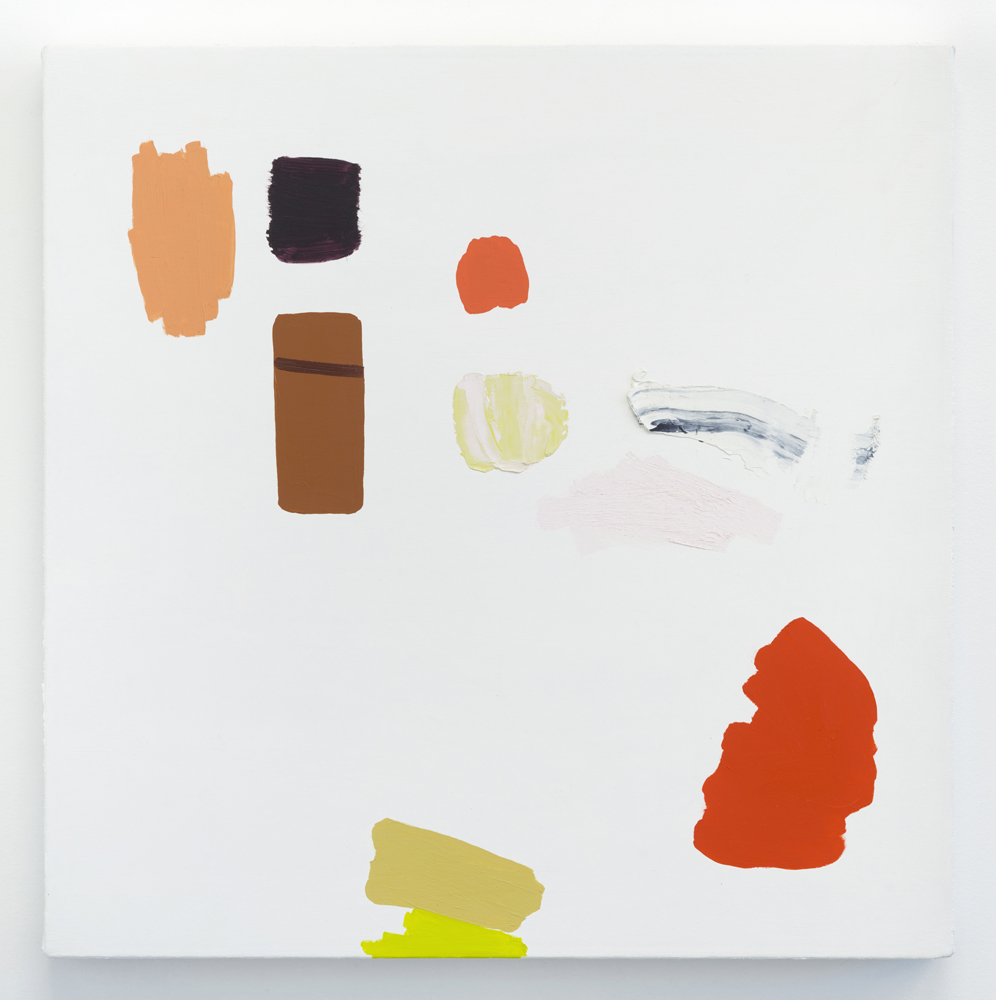Francesca Capone
Night Fog (As the object grows, it curves around the forms of its surrounding shapes)
2018, Lostine long wool, poly netting line, and cotton on oak board, 24 x 22 inches
Nestled in the backroom between an Amy Bernstein painting and an Emily Counts sculpture is Francesca Capone’s Night Fog, part of her solo exhibition at Nationale entitled Think of Seashells.
As a weaver and a poet, Capone approaches her work from a visual as well as a literary mindset. The prose attributed to this particular work by the artist reads as follows: As the object grows, it curves around the forms of its surrounding shapes, and it feels as if this is precisely how Night Fog operates in the context of the show as a whole. Although it may be the final work a visitor may see tucked away as it is, its bold resonance does indeed curve to the viewing experience and serve to form a lasting impression. As a gallery-goer moves through the space, they are gathering growing memories of the body of work in total. Culminating with Night Fog, this particular piece stands somewhat solitary, both due to its location but also to its composition. Mounted on oak board, this is only one of two weavings that is presented in this manner. Yet, this doesn’t detract from its overall relation to the remaining pieces -- the oak nicely completes oceanic visions of seashells and driftwood that Capone brings into the space. The poly netting line similarly compliments other found materials such as the flotsam rope, plastic bags, and beach refuse that are embedded into the fiber of the hangings.
The dark colors of this particular weaving are slightly more drastic than the inviting pastels of the other works, yet they correspond nicely with its placement. If Night Fog were the last work to be seen, it would leave viewers with a cool imagery of things closing, things coming to a rest. Invoking a kind of serenity that can only be found with the setting of the sun on a calm evening, Night Fog creates a comfortable sensory shroud for viewers to come in contact with. The day has come and gone and grown into night, which silently and cooly forms to this nightly ritual. Take a deep breath, let the fog ebb over you, and think of seashells.


